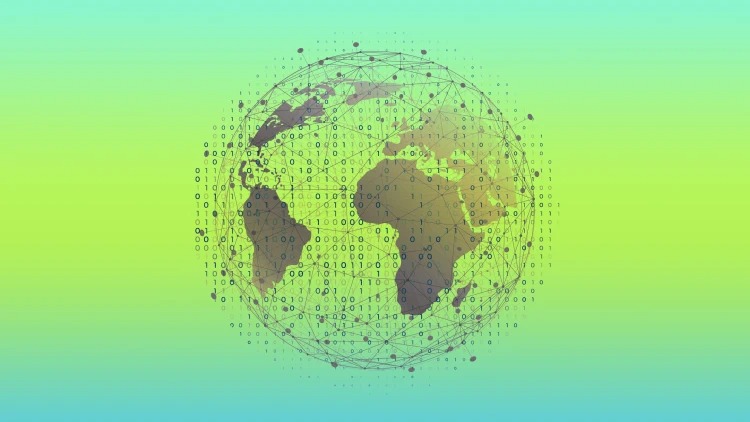- | 9:00 am
Will AI be a game changer in developing countries?
Data is needed, but best used by consolidating it through each industry.

To read this text and its propositions, the reader must accept two inferences as true:
The first is that using AI involves the application of statistical methods to identify patterns, propose hypotheses (predictive, generative AI), simulate, and ultimately stimulate scenarios. In other words, it aims to solve significant problems through rigid or incremental innovation.
The second is that most collective issues share the common need for the state’s role in regulating, mediating, or directly participating in their resolution. If the reader considers either of these inferences unlikely, continuing from here would be a waste of time.
The problem with developing countries
Developing countries have a more fragmented environment due to democracies that are still improving, which increases the incidence of principal-agent conflicts in community relations. Decision makers act with little or no accountability and without coordination.
In these countries, the public sector stands as the largest employer and provides benefits that the private sector does not offer. Being a government employee is considered a privilege. This situation demonstrates that public service in these nations lacks the sense of purpose that could mitigate conflicts of interest.
As a result, these countries experience higher levels of corruption, and in response, tend to impose barriers on public sector contracting and transactions with private enterprises.
If building data pipelines mainly involves the collaboration of various data professionals—from data capture to processing, and the application of statistical or predictive techniques that generate new hypotheses and, consequently, solutions—states would need to make good hires across different skill sets (either individuals or companies) over overlapping periods within any project’s timeline. This, however, is naturally impossible given their bureaucratic structures.
Data is locked in organizations
The challenges start to feel overwhelming even at the basic stages of AI adoption: data acquisition. Structured or unstructured, transactional or not, this data is locked within companies, various levels of government (such as regulatory agencies), or industry associations.
Take Brazil for example, where our company operates. Many of these associations are still relatively young. Even those that possess data often have it in a disorganized form, while the vast majority lack data altogether. It’s important to remember that democracy in Latin America is a recent phenomenon, just over 30 years, and it remains inconsistent. These associations face similar issues, struggling with a lack of guidance and governance. They operate in an institutional environment that, as previously mentioned, is fragmented.
Ultimately, these organizations find it difficult to grasp the direction of public policies—and even more challenging, to understand the corporate strategies of their countries, to use business jargon.
Data fragmentation
So, let’s talk about companies—they have data! But they don’t really know what to do with it, and the data fragmentation across small businesses makes the task economically unfeasible. The solution would lie in concentrating this data within industry associations, but by now, the reader will have noticed the circular reference (for data professionals) or the conundrum (for avid readers).
In the case of international companies operating in developing countries, they may have sufficient data, but due to a lack of coordination among their subsidiaries or the absence of enforced compliance in these countries, they either remain stuck or pursue low-impact initiatives.
My company ReRe investigates data in agricultural operations, looking for insights that lead to better hypotheses. Right now, we are focusing on solid waste. Yes! we’re diving into the hype of circularity.
All the challenges mentioned earlier are part of our daily work, but what gives us an advantage is having a founder with a strong appetite for counterintuitive solutions. He ensures we have the funding to collect, verify, and process data, even without a clear view of the outputs this endeavor may bring.
Our day-to-day is highly complex. We must convince various players to provide us with data—data they often have but don’t want to share, or data they can’t even collect, let alone transform. We navigate through corporate corridors, agricultural oversight bodies, the federal and state congresses, city halls, public statistics departments, and countless public and private ESG initiatives that are often redundant and fail to align their efforts, among others.
Data analysis can lead to solutions
It’s just as challenging to convince stakeholders to use this information, encouraging them to pursue solutions that benefit the collective but go against their personal interests—this takes a lot of our team’s energy.
Our budget is significant, allowing us to confirm the quantitative data gathered from this extreme (and often random) fragmentation, conduct interviews to interpret what the data is silently revealing, and keep our teams motivated and engaged.
In the face of all these challenges—building a data warehouse that supports credible analyses and sound hypotheses—we can predict that, in industry terms, it’s unlikely we’ll achieve game-changing results. However, our early results give us hope. They have revealed previously invisible issues, and with each step forward, our main thesis gains strength: the data suggests counterintuitive solutions.
For example, we discovered that packaging used for agricultural chemicals, soil conditioners, and fertilizers—many of them harmful to humans and animals—supplied by multinational chemical companies and used in Brazilian agriculture, were found in the transportation of food for human consumption, among other findings.
Solutions to these issues will emerge from modern computational models and community cooperation, just as we envision for agricultural packaging in a vast country like Brazil.
What is highly likely, though, is that if the data is gathered and validated, and AI tools are applied effectively to generate solutions for the developing world, the real game-changer will be the soft skills required to manage the variability and externalities of this environment.






































